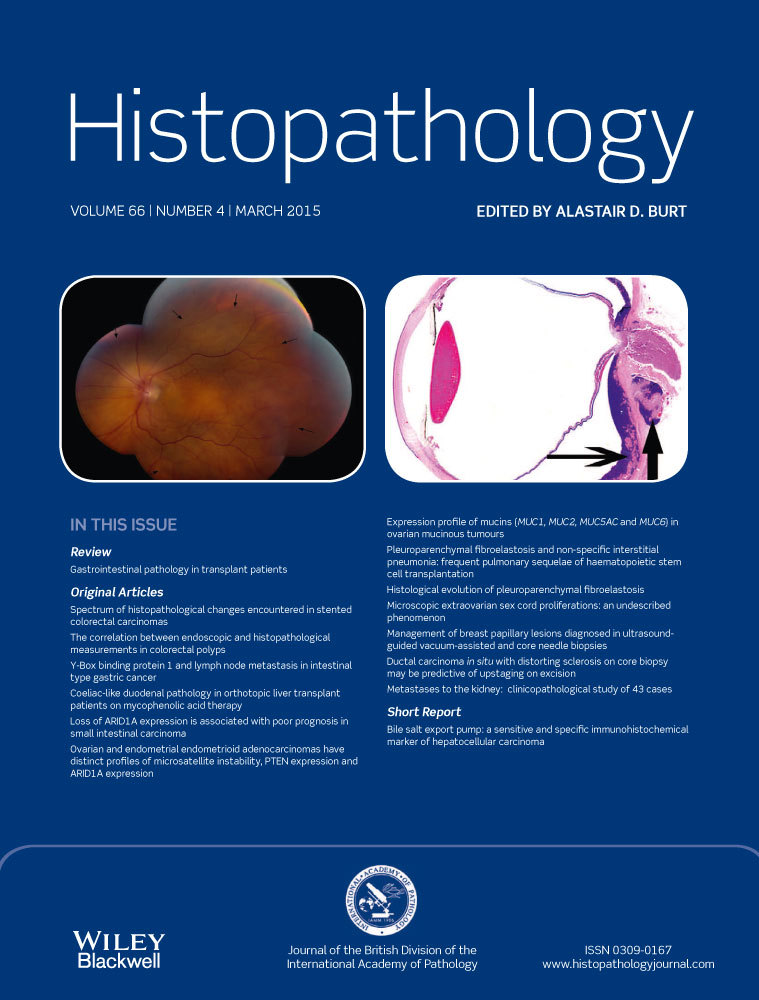Ductal carcinoma in situ with distorting sclerosis on core biopsy may be predictive of upstaging on excision
Abstract
Aims
The aim of this study was to examine clinicopathological features of patients with core biopsy diagnoses of ductal carcinoma in situ (DCIS) that may predict invasion on subsequent excision, as upstaging has significant implications regarding the need for axillary staging via sentinel lymph node biopsy (SLNB).
Methods and results
We identified 186 patients with a diagnosis of DCIS as the highest-stage lesion on core biopsy. Pathological and clinical features were assessed via slide and chart review, respectively. Distorting sclerosis was defined as irregular angulation of glands involved by DCIS but lacking definite invasion according to histology and/or immunohistochemical staining for myoepithelial markers. Thirty-two of 186 (17.2%) cases had upstaging to either microinvasive (nine) or invasive (23) ductal carcinoma. SLNB was performed in 29 of 32 (90.6%) cases with upstaging and in 55 of 154 (35.7%) cases without (P < 0.0001). Upstaging was significantly associated with the presurgical variables of radiological mass (P = 0.009) and distorting sclerosis (P = 0.0005) and the postsurgical feature of multifocality (P < 0.0001).
Conclusions
Sentinel lymph node biopsy is frequently performed for patients with upstaging from DCIS on core biopsy to microinvasive or invasive carcinoma on excision. DCIS with distorting sclerosis without definite invasion on core biopsy may be predictive of upstaging. This feature may be useful in selecting patients to undergo SLNB at the time of excision to avoid reoperation.




